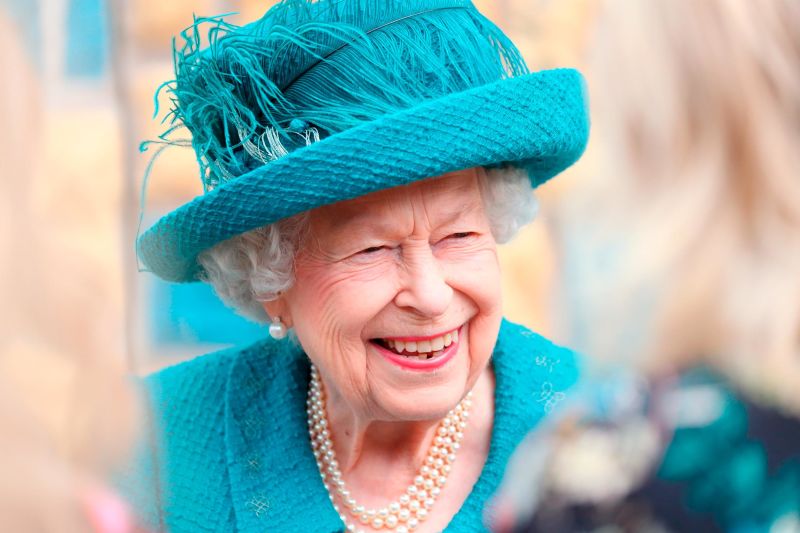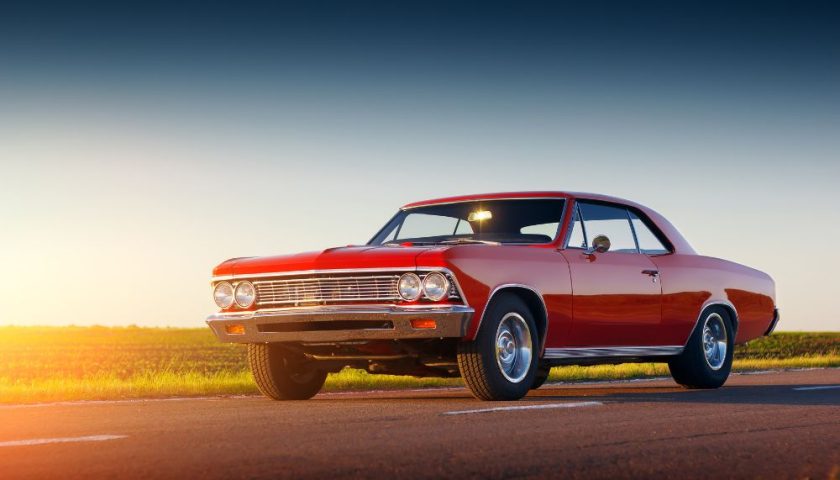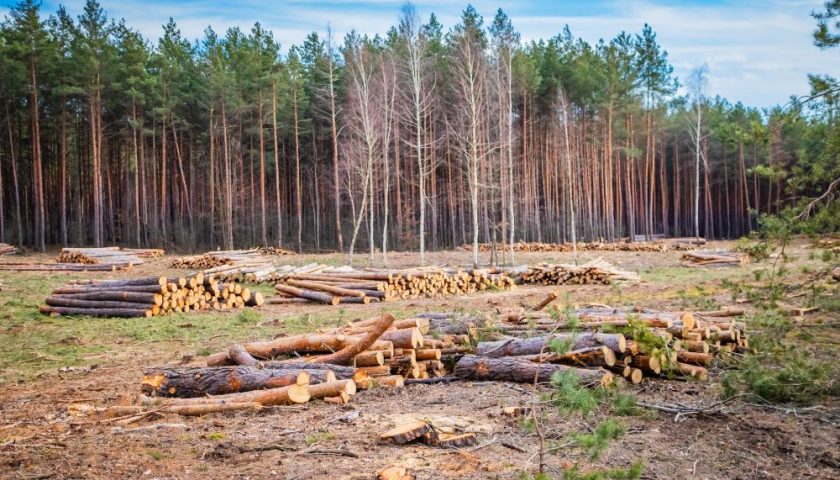London
CNN
—
“I declare before you all that my whole life whether it be long or short shall be devoted to your service and the service of our great imperial family to which we all belong.”
This line, delivered on Elizabeth II’s 21st birthday, defines her career like few others. Within five years, she would be Queen – and she’d go on to be the longest serving monarch in British history.
The speech was given in Cape Town on April 21, 1947 during a tour of South Africa – when it was still a British colony – and it speaks to several key themes of her reign.
Firstly, Elizabeth II dedicated herself to lifelong service. This explains why she never abdicated, even as many of her younger contemporaries did. Between February 2013 and June 19, 2014, four European monarchs stepped down: Pope Benedict XVI of Vatican City; Queen Beatrix of the Netherlands; King Albert II of Belgium; and King Juan Carlos I of Spain.
Elizabeth, a devout Christian who rarely missed a Sunday at church, resisted the exodus because of the promise she made not just to her subjects but to God. There’s a clue to that at the end of her 21st birthday speech: “I shall not have strength to carry out this resolution alone unless you join in it with me, as I now invite you to do: I know that your support will be unfailingly given. God help me to make good my vow, and God bless all of you who are willing to share in it.”
Even when her husband, Prince Philip, retired in 2017, Elizabeth continued public engagements and brought in other members of the family to accompany her as needed. Just days after Philip’s death in 2021, she resumed official duties with the appointment of new ambassadors to the UK.
Secondly, in that 1947 speech, she devoted herself to the “great imperial family,” by which she meant the British empire. The UK was losing world dominance at the time. It was the year India declared independence and ousted her father, King George VI, as head of state.
Dozens more were to follow suit over the following decades, across Africa, Asia and the Caribbean. By the time of her death, Elizabeth was head of state in 14 countries besides the UK.
Elizabeth came to see that as an opportunity rather than a threat. India had asked to remain part of the Commonwealth and two years later the request was granted, at the Commonwealth Heads of Government Meeting of 1949. The monarch’s role in India was redefined as “the symbol of the free association of the independent Member Nations and as such Head of the Commonwealth.”
That was a model later adopted by other newly independent states, as British rule came to an end across Africa, Asia and other regions of the world.
When the Queen inherited the title of Head of The Commonwealth from her father, she embraced it – which is why she is often credited with the “managed decline of the empire.” She may have lost her empire, but she retained her international footprint and reinforced it by traveling more than any of her predecessors.
She visited every one of the Commonwealth nations apart from Rwanda and Cameroon and made sure she attended key Commonwealth meetings to show her support. As she got older, she cut back on international travel but called on her eldest son, Prince Charles, to represent her instead.
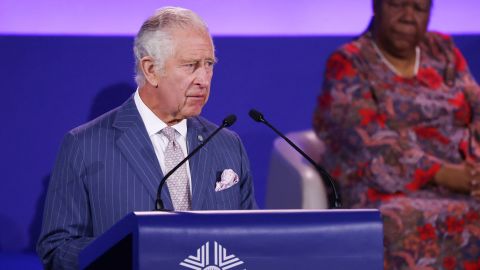
In November 2021, Barbados severed its last imperial ties to Britain, removing the Queen as head of state as it marked its 55th anniversary of independence. Like others before it, the island nation has remained part of the Commonwealth.
On Saturday, Antigua and Barbuda signaled it could be the next country to go its own way, with the prime minister saying he wanted to hold a referendum to become a republic within three years.
Beyond that, the republican movements in Australia and Jamaica have perhaps the most momentum, but their biggest obstacle was always the Queen herself.
In July 2017, then-Australian Prime Minister Malcolm Turnbull – a co-founder of the Australian Republican Movement – summed it up when he was granted an audience at Buckingham Palace. “Although I am a Republican, I am also an Elizabethan,” he tweeted. “It was an honour to meet Her Majesty today at Buckingham Palace.”
Over the decades, the Queen did as she promised and devoted herself to the service of the British people. This, coupled with her ability to adapt with the changing times and make sure she remained in the public eye, meant she largely kept their loyalty despite painful upheaval within the royal family.
As a result, the British republican movement gained little traction during Elizabeth’s reign except for two periods. The first was in 1992, which she herself described as her Annus Horribilis, or “terrible year.” Two of her children, Charles and Andrew, announced their separations and her daughter, Anne, got divorced. Her favored home, Windsor Castle, also went up in flames.

“Nineteen-ninety-two is not a year on which I shall look back with undiluted pleasure,” she told an audience at Guildhall in November of that year. “In the words of one of my more sympathetic correspondents, it has turned out to be an ‘Annus Horribilis.’ I suspect that I am not alone in thinking it so.”
Her other big low was after the death of daughter-in-law, Diana, Princess of Wales, in 1997. There was a backlash when people noticed the flag hadn’t been lowered over Buckingham Palace. Newspapers questioned why the Queen hadn’t returned to London from her holiday home in Scotland. She had her reasons. That flag had never been lowered even on the death of a monarch and she stayed in Scotland because she was helping to care for Diana’s children, Princes William and Harry.
Eventually, she returned to the capital and paid tribute to Diana in a live broadcast. She also had the flag lowered for Diana’s funeral.
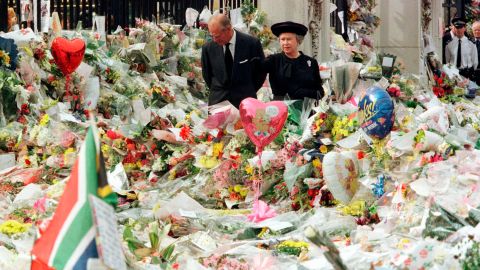
Nonetheless, Elizabeth’s approval rating didn’t fully recover until the blockbuster wedding of Prince William and Kate Middleton at Westminster Abbey in 2011. William was given free rein on whom he wanted to marry – and he chose a commoner. This turned the story into a fairytale and the whole world tuned in to watch.
William was also given free rein on whom he invited to the ceremony. He told a documentary team in 2012 how he was handed an official guest list and didn’t recognize anyone on it, so he had a word with his grandmother. “There was very much a subdued moment when I was handed a list with 777 names on, not one person I knew or Catherine knew,” he said. “I went to her and said: ‘Listen, I’ve got this list, not one person I know. What do I do?’ and she (The Queen) went: ‘Get rid of it. Start from your friends and then we’ll add those we need to in due course. It’s your day.’”
The Queen was allowing the younger generation to do things their own way and appeal to people their own age.
After the wedding, the Duke and Duchess of Cambridge – as they were then styled – were also granted considerable freedom to set up William’s own court at Kensington Palace.
But that was nothing compared to the leeway his younger brother was allowed with his wedding to Meghan Markle. Not only was she a biracial, American actress, feminist and divorcee but she wasn’t a member of the Church of England, though she was brought up an Anglican.
As important as it was for all these elements to be reflected on her big day at St George’s Chapel in Windsor, it was also important for the monarchy – and the Queen knew it. The gospel choir; the sermon from Episcopalian bishop Michael Curry; the way Meghan walked herself down the first part of the aisle: she made the royal family relevant to so many people it wasn’t relevant to before and it was a triumph all round.
Everyone involved was a winner, just as they all lost when Meghan and Harry felt they couldn’t carry on in their royal roles and moved to North America two years later. They gave their reasons why in an explosive interview with Oprah Winfrey in 2021, accusing “the firm” of failing to support them and accusing an unnamed family member of making a racist remark about their son’s skin color.
Whilst Harry was scathing in the interview about his father, he said he continued to have respect for his grandmother.
Another major challenge for the Queen in recent years was the scandal surrounding her son, Prince Andrew, and his connection to the late pedophile Jeffrey Epstein. Andrew stepped back from royal duties in late 2019 amid the furor.
In January 2022, the Queen stripped Andrew of his remaining military titles and charities, as well as his right to be called His Royal Highness, as her son vowed to battle on in a civil sex abuse case brought against him in the United States. The following month the prince reached a deal with his accuser, Virginia Giuffre. Andrew repeatedly rejected the allegations against him.
The Queen largely avoided becoming the target of public anger over the saga, though questions remain over how her son was able to afford the undisclosed legal bill, which was expected to run into the millions.
Although the palace would not comment on the settlement at the time, insiders believed the move would have been welcomed by the institution ahead of the Queen’s platinum jubilee celebrations later that summer.
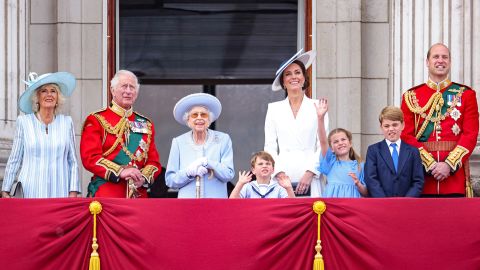
The Queen’s ability to adapt was perhaps best exemplified by her unquestionably historic visit to the Republic of Ireland in 2011, the first by a British monarch in a century. Mary McAleese, the Irish President, described the visit as the culmination of the success of the peace process. A transient politician would never have lent the occasion the same weight.
The Queen received a standing ovation after a speech at Dublin Castle and plaudits from across the political divide. The following year, she followed up with a visit to Northern Ireland where she put aside the murder of her cousin, the Earl of Mountbatten, by the IRA in 1979, to shake hands with Martin McGuinness. He was allegedly an IRA commander at the time of Mountbatten’s death.
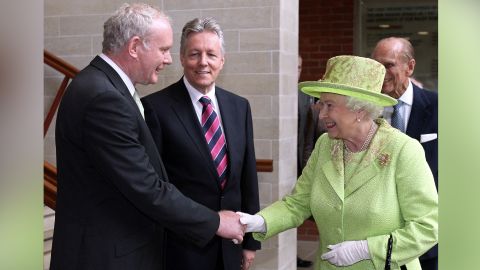
The result: one handshake caught on camera and another footnote in history with the Queen at the center of it.
Elizabeth understood the power of the media from an early age, and harnessing it was to become another key theme of her reign. That speech on her 21st birthday was recorded not just for radio but also for the emerging medium of television. At her coronation in 1953, she personally requested that cameras be allowed in to Westminster Abbey to broadcast the ceremony live.
People famously went out to buy television sets so they could watch. It was a sacrosanct moment the public had never before been able to witness; they remembered where they were and who they watched with. The Queen had inadvertently invented event television. All she wanted was for as many people as possible to feel part of it.
A phrase often attributed to Elizabeth was that “you have to be seen to be believed.” She understood that it wasn’t enough to go out in public, but she had to be seen there. Television gave her a bigger audience and when color was introduced, she wore brighter shades so she would stand out.
She allowed cameras into her day-to-day engagements too, whether it was opening a hospital or attending a local event of some sort. Instead of walking past the crowds of well-wishers, she stopped and talked to them, something which was almost unheard of at the time. Those “walkabouts” would appear in the media and show her amongst the people, not hidden behind palace walls. She supported hundreds of charities and good causes so she could get out and meet even more people.
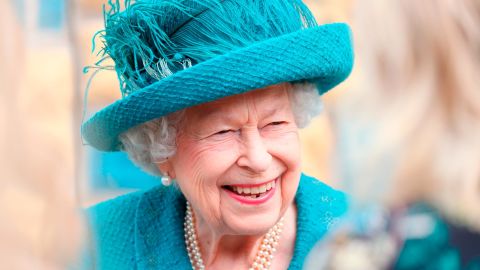
When the digital revolution arrived, the Queen embraced it with her own website. She established a social media presence long before her children or grandchildren did. The internet presented her with another way of connecting with her public and making herself relevant to their lives. She didn’t have to say anything. She never gave an interview. She understood that she just needed to be present.
This was a woman playing the long game. Headlines came and went.

If Elizabeth gave a speech, she wouldn’t show any expression, or offer an opinion. This approach meant she retained broad public support, including in parliament, which was the one body that had the power to dethrone her.
If she had a particular talent, it was knowing when to step in and take center stage. Who can forget her “parachuting” into the London Olympics opening ceremony with James Bond?
At times of crisis, such as the coronavirus pandemic of 2020, she addressed the country in her role as “Head of the Nation” and expertly articulated the national mood and offered reassurance. She said the UK “will succeed” in its fight against the virus and she praised those who had been following government guidelines and come “together to help others.”
Evoking wartime language to place the scale of the crisis in context, she added: “We should take comfort that while we may have more still to endure, better days will return: we will be with our friends again; we will be with our families again; we will meet again.”
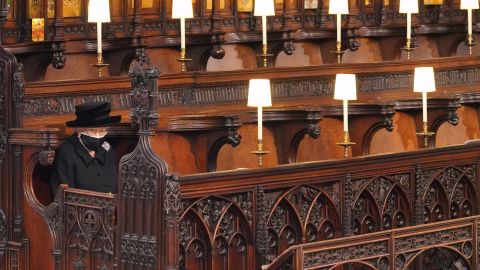
As the lockdown continued in the United Kingdom, the Queen and her family had to find a way to continue to “be seen” when they weren’t able to go out and meet people anymore. So, they did what everyone else did. They video-conferenced into public engagements and released the video to the media.
It showed a more personal side to the Queen and her family which one doesn’t see when they are surrounded by people and cameras. Photographers were also allowed into Windsor Castle to capture Prince Philip’s funeral, delivering a poignant and profound image of the Queen grieving on her own in the chapel, as she followed social-distancing rules like her subjects around the nation.
If any monarch’s primary role is to secure and strengthen the Crown for the next generation, then Elizabeth did so with her constant presence, but always adapting and keeping the institution relevant.
Over the course of her long reign, she transformed and updated the brand more than people realize and kept it fit for purpose. It’s up to her heir, an altogether more divisive figure, to honor that legacy and do the same in his own way.


